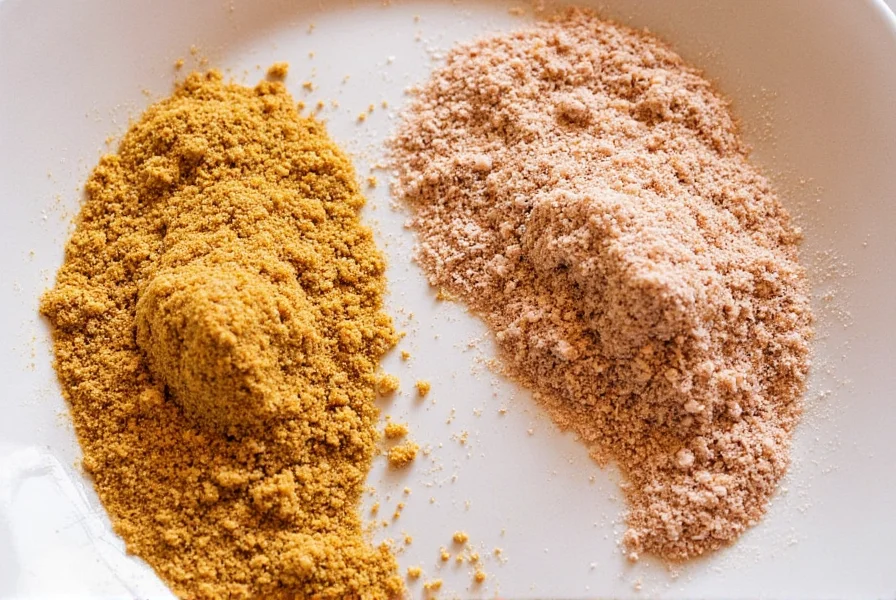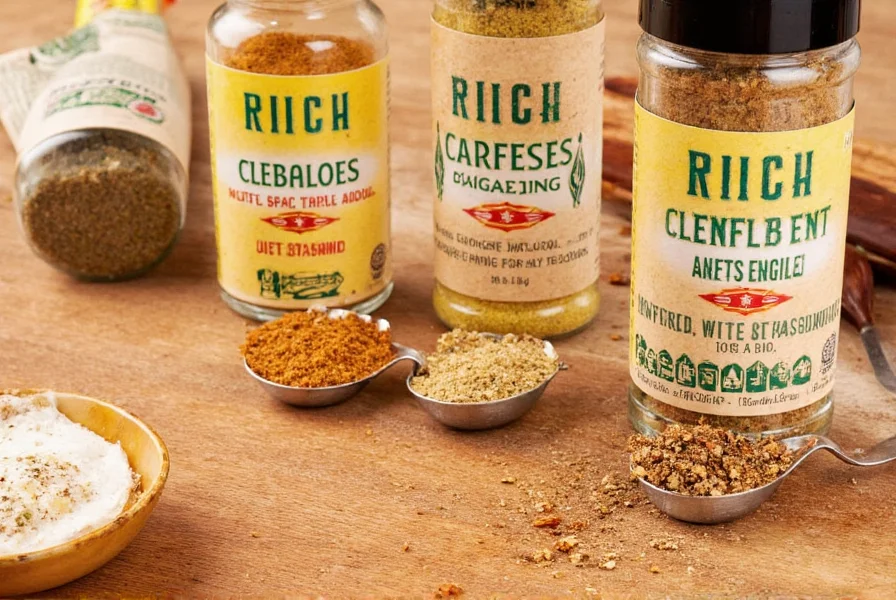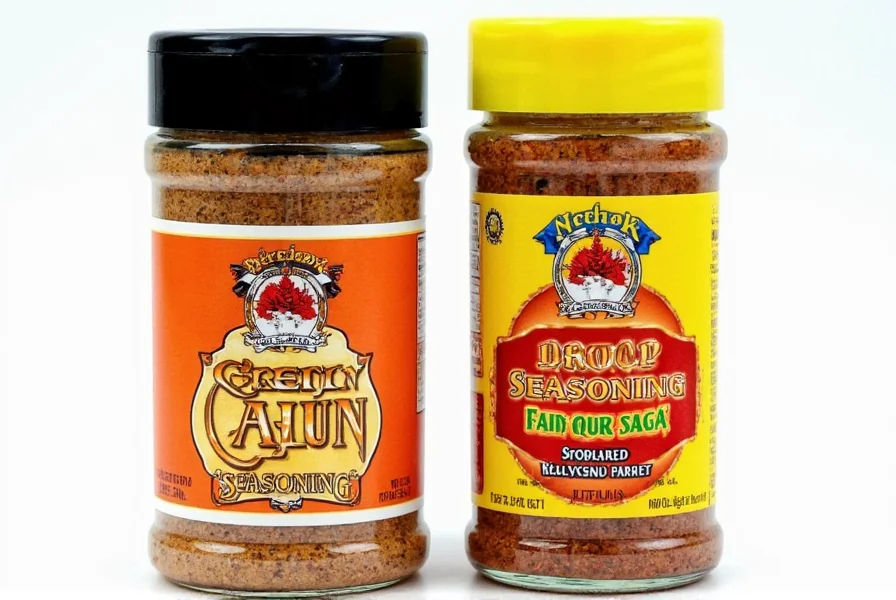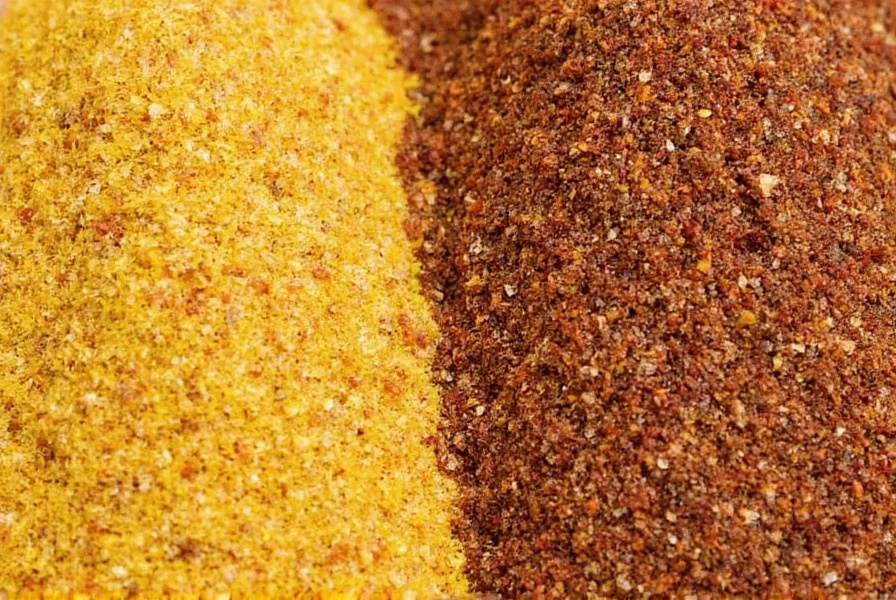Creole and Cajun seasonings are often confused, but they have key differences in ingredients, heat level, and best uses. Here's a quick breakdown: Creole is milder, more herbal (with oregano and thyme), and ideal for seafood and soups, while Cajun is spicier (with more cayenne), smokier, and perfect for meats and stews. Let's dive deeper to master these Louisiana classics.

Understanding the Origins: Creole and Cajun Roots
Knowing where these seasonings come from explains their distinct profiles. Creole seasoning originated in New Orleans, blending French, Spanish, African, and German influences for a refined, herbal taste. Cajun seasoning comes from rural Louisiana bayous, brought by Acadian exiles, focusing on bold, fiery flavors for rustic dishes.

Creole vs Cajun: Key Differences at a Glance
| Feature | Creole Seasoning | Cajun Seasoning |
|---|---|---|
| Main Herbs | Oregano, thyme, basil | Paprika, black pepper, cumin |
| Heat Level | Mild to moderate | Moderate to high |
| Taste Profile | Earthy, herbaceous, slightly tangy | Smoky, spicy, bold |
| Best For | Seafood, soups, rice dishes | Grilled meats, stews, barbecue |
| Origin | New Orleans urban cuisine | Rural Louisiana bayous |

How to Use Each Like a Flavor Wizard
Choosing the right seasoning transforms your dishes. Here's how to apply them:
Creole Seasoning: Delicate Balance
- Fish tacos: A light dusting adds zesty flair without overpowering delicate fish.
- Red beans and rice: Creole seasoning brings warmth and depth to legumes.
- Grilled veggies: Toss zucchini, eggplant, or bell peppers with olive oil and a pinch of Creole magic.
Cajun Seasoning: Bold Moves Only
- Jambalaya: The holy grail of Cajun cooking. Sprinkle generously over sausages and chicken.
- Blackened salmon: Rub it on thick before searing for an intense flavor crust.
- BBQ dry rubs: Mix with brown sugar, chili powder, and salt for smoky-spicy ribs.

Buying Guide: Choosing the Best for Your Kitchen
Whether shopping online or in-store, prioritize these factors:
Top Picks for Creole Seasoning
- Zatarain's Creole Seasoning
- Pros: Balanced blend with just the right amount of heat
- Use case: Great for everyday cooking and classic recipes
- Best for: Families, seafood lovers
- Recommended for: Making gumbo, shrimp pasta, and roasted potatoes
- Old Bay Zesty Creole
- Pros: Citrus twist for freshness and zestiness
- Use case: Ideal for summer grilling or citrus-marinated fish
- Best for: Grilled seafood, salads, potato salad
- Recommended for: Casual cooks looking for a flavorful but mild option
Top Picks for Cajun Seasoning
- Tabasco Cajun Blend
- Pros: Made by a trusted name in hot sauces; medium heat level
- Use case: Versatile for roasting, grilling, and stews
- Best for: Everyday meals and adventurous eaters
- Recommended for: Ribs, fried chicken, and crawfish boil
- Cajun's Choice Original Blend
- Pros: Authentic, family-made recipe from Louisiana
- Use case: Perfect for slow-cooked stews and backyard BBQ
- Best for: Southern food lovers and home chefs
- Recommended for: Gumbo, jambalaya, and smoked meats

DIY Time: Make Your Own at Home
Control heat, salt, and flavor with these simple recipes:
Homemade Creole Seasoning
- 2 tbsp paprika
- 1 tbsp garlic powder
- 1 tbsp onion powder
- 1 tsp dried oregano
- 1 tsp dried thyme
- ½ tsp cayenne (optional)
- Salt to taste
Mix everything together and store in an airtight jar. Shake well before using!
Homemade Cajun Seasoning
- 2 tbsp paprika
- 1 tbsp garlic powder
- 1 tbsp onion powder
- 1 tsp cayenne pepper
- 1 tsp black pepper
- 1 tsp dried thyme
- ½ tsp cumin
- Salt to taste
This version packs a punch. Adjust cayenne based on your tolerance!

FAQ: Your Burning Questions Answered
Is Creole seasoning the same as Cajun seasoning?
No, Creole and Cajun seasonings are not the same. While they share common ingredients like garlic powder and black pepper, Creole is milder and herbal (with oregano and thyme), while Cajun is spicier with more cayenne and smokier notes. Creole excels in seafood dishes, while Cajun is ideal for meats and stews.
Can I substitute Creole seasoning for Cajun seasoning in recipes?
Yes, but adjust for heat and flavor. For Creole-to-Cajun substitution, add extra cayenne or black pepper. For Cajun-to-Creole, reduce the amount or add herbs like oregano to balance spiciness. Always consider the dish's requirements—Creole works best for delicate seafood, while Cajun suits bold, meaty recipes.
Which seasoning is spicier, Creole or Cajun?
Cajun seasoning is generally spicier due to higher cayenne content. Creole focuses on herbal balance with mild heat, though exact levels vary by brand. For example, traditional Creole may contain little to no cayenne, while Cajun blends emphasize fiery kick for robust dishes.
What's the main difference between Creole and Cajun cuisine?
Creole cuisine comes from New Orleans, blending French, Spanish, African, and German influences for refined, tomato-based dishes with herbal seasoning. Cajun cuisine originates from rural Louisiana bayous, featuring bolder, spicier, and more rustic recipes without tomatoes, often using smoked meats and hearty stews.
Why do people confuse Creole and Cajun seasonings?
They're often confused due to shared Louisiana roots, overlapping ingredients, and commercial blends using interchangeable terms. Historical cultural blending in Louisiana also blurs distinctions for outsiders. However, understanding their core differences—Creole for seafood and herbs, Cajun for meats and heat—solves the confusion.
Does authentic Creole seasoning contain cayenne pepper?
Authentic Creole seasoning typically contains little to no cayenne pepper, focusing instead on paprika for color and mild sweetness, along with herbs like oregano and thyme. Modern commercial blends sometimes add cayenne for heat, but traditional recipes prioritize herbal complexity over spiciness. This is a key reason why Creole is milder than Cajun.

Final Thoughts: Which One Should You Reach For?
Creole and Cajun seasonings are cousins, not twins. Creole brings herbal elegance to seafood and soups, while Cajun delivers fiery depth for meats and stews. Mastering their differences elevates your cooking from ordinary to exceptional. Grab your favorite blend and cook with confidence—no judgment if you accidentally spice up your eggs with a little Cajun fire!












 浙公网安备
33010002000092号
浙公网安备
33010002000092号 浙B2-20120091-4
浙B2-20120091-4